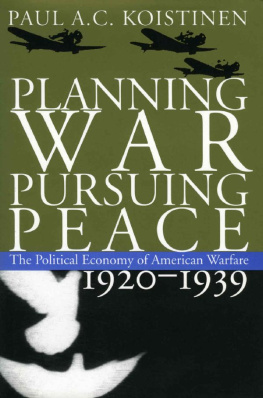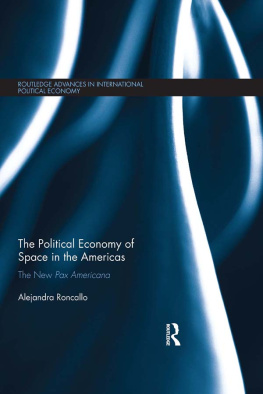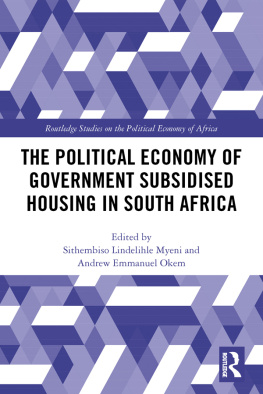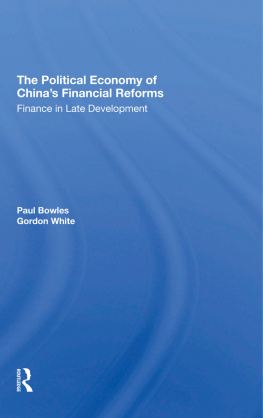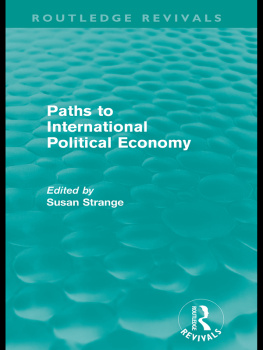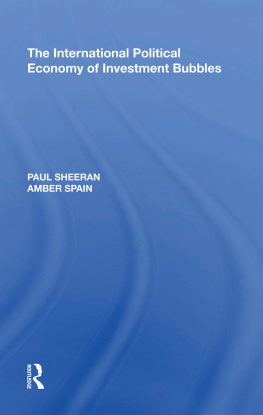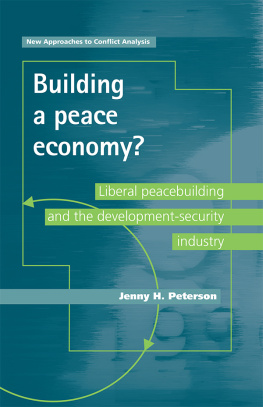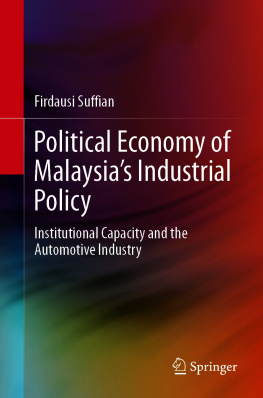PLANNING WAR,
PURSUING PEACE
MODERN WAR STUDIES
Theodore A. Wilson
General Editor
Raymond A. Callahan
J. Garry Clifford
Jacob W. Kipp
Jay Luvaas
Allan R. Millett
Dennis Showalter
Series Editors
PLANNING WAR,
PURSUING PEACE
THE POLITICAL ECONOMY OF
AMERICAN WARFARE,
19201939
PAUL A. C. KOISTINEN

1998 by the University Press of Kansas
All rights reserved
Published by the University Press of Kansas (Lawrence, Kansas 66045), which was organized by the Kansas Board of Regents and is operated and funded by Emporia State University, Fort Hays State University, Kansas State University, Pittsburg State University, the University of Kansas, and Wichita State University
Library of Congress Cataloging-in-Publication Data
Koistinen, Paul A. C.
Planning war, pursuing peace: the political economy of American warfare, 19201939 / Paul A.C. Koistinen.
p. cm. (Modern war studies)
Includes bibliographical references and index.
ISBN 978-0-7006-2115-6 (pbk. : alk. paper)
1. WarEconomic aspectsUnited StatesHistory20th century. 2. United StatesDefensesHistory20th century. 3. Industrial mobilizationUnited StatesHistory20th century. I. Title. II. Series.
HC110.D4K645 1998
338.4'76233'0973dc21
97-47716
British Library Cataloguing in Publication Data is available.
10 9 8 7 6 5 4 3 2 1
The paper used in this publication meets the minimum requirements of the American National Standard for Permanence of Paper for Printed Library Materials Z39.48-1992.
For the Northridge Six
Shiva Bajpai
John J. Broesamle
Ronald L. F. Davis
Sheldon H. Harris
Ronald Schaffer
Reba N. Soffer
To every thing there is a season, and a time to every
purpose under the heaven:
A time to be born, and a time to die; a time to plant,
and a time to pluck up that which is planted;
A time to kill, and a time to heal; a time to break
down, and a time to build up;
A time to rend, and a time to sew; a time to keep
silence, and a time to speak;
A time to love, and a time to hate; a time of war,
and a time of peace.
Ecclesiastes 3:13, 78
CONTENTS
PREFACE
This volume is the third in a five-volume study of the political economy of American warfarethe means the nation has employed to mobilize its economic resources for defense and hostilities. In this book, I examine the years from 1920 through 1939. Volume 1, Beating Plowshares into Swords: The Political Economy of American Warfare, 16061865 (Lawrence: University Press of Kansas, 1996), covers the colonial period through the Civil War; volume 2, Mobilizing for Modern War: The Political Economy of American Warfare, 18651919 (Lawrence: University Press of Kansas, 1997), focuses on the Gilded Age, the Progressive Era, and World War I. In volume 4, I shall deal with World War II and in volume 5, with the Cold War period.
My goal in this multivolume study is to provide scholars and other readers with a source that is now unavailable: a comprehensive, analytical, and interdisciplinary study of the economics of Americas wars from the colonial period to today. In doing so, I demonstrate the impact of the political economy of warfare upon domestic life and explore what economic mobilization for defense and war reveals about the nature and operations of power within society. I also seek to expand on the study of military history by examining in depth and breadth an aspect of warfare that is often ignored or treated in a perfunctory manner. This different perspective leads to different insights and conclusions about civilians, soldiers and sailors, and warfare. If I raise as many questions as I answer, I will have more than accomplished my purpose.
Analyzing how America has mobilized its economic resources for war and defense is important for a number of reasons. Logistics are basic to warfare and depend upon the nations ability to marshal effectively its economic might. Over the centuries, economic mobilization has followed a discernible evolutionary pattern that illuminates the study of warfare and the military. Furthermore, how the United States has mobilized its economy reveals a great deal about institutional and power structures. Indeed, the stress and demands of warfare make manifest social patterns that are less evident or are obscured during years of peace.
The political economy of warfare involves the interrelationships of the political, economic, and military institutions in devising the means to mobilize resources for defense and to conduct war. In each war, the magnitude and duration of the fighting have dictated what the nation had to do to harness its economic power, but prewar trends have largely determined how this mobilization took place. Four factors are essential in determining the method of mobilization. The first is economicthe level of maturity of the economy; the second is politicalthe size, strength, and scope of the federal government; the third is militarythe character and structure of the military services and the relationship between them and civilian society and authority; and the fourth is the state of military technology.
Patterns of economic mobilization for war have passed through three major stages over the course of American history. The Revolutionary War, the Civil War, and twentieth-century warfare best characterize these stages, which I have labeled preindustrial, transitional, and industrial. Altering the four factorseconomic, political, military, and technologicalmodifies each stage of mobilization. The factors have seldom changed at the same time or pace, but over time each has had to keep up with the others so that viable patterns of economic mobilization could be maintained.
The preindustrial stage of economic mobilization for war extended from the colonial period to approximately 1815 and included the Revolutionary War and the War of 1812. During the American Revolution, economic, governmental, and military institutions were in an embryonic state and were not clearly distinguished from one another. Military technology was rather primitive and varied little from production in the peacetime economy. Hence, economic mobilization involved increasing civilian output and diverting products from civilian to military use in order to supply the armed forces without converting the economy. Nonetheless, to maximize output, comprehensive regulation of the emerging nations economic life became essential. Yet the undeveloped nature of economic, political, and military institutions not only prevented such regulation from ever working well but also resulted in private and public, civil and military activities becoming inextricably intertwined. Merchants simultaneously served as public officials and military officers while they continued to conduct their private affairs.
The effects of harnessing the economy for war carried over into the years of peace. By highlighting the weaknesses of the Articles of Confederation, economic mobilization helped to create the momentum for the ideas underlying the Constitution. And, during the early national period, intense conflict grew between the factions that became the Federalist and Republican parties over the strength and policies of the national government under the new charter. This strife weakened the federal government and stunted the growth of the armed services, a major source of dispute. Consequently, although the economy was much stronger in 1812 than in 1776 and military technology had changed little during that period, economic mobilization for the War of 1812 did not improve measurably over what it had been for the Revolutionary War.
Next page
